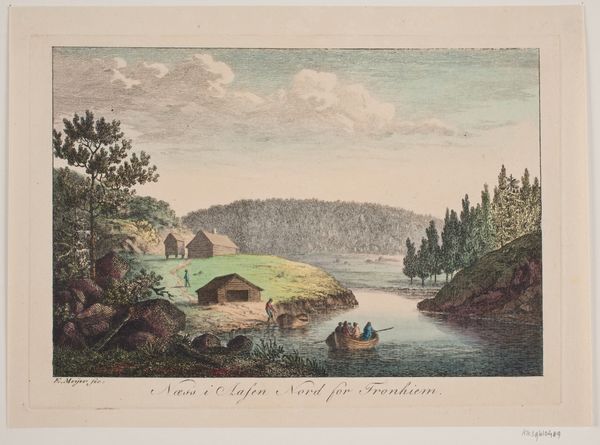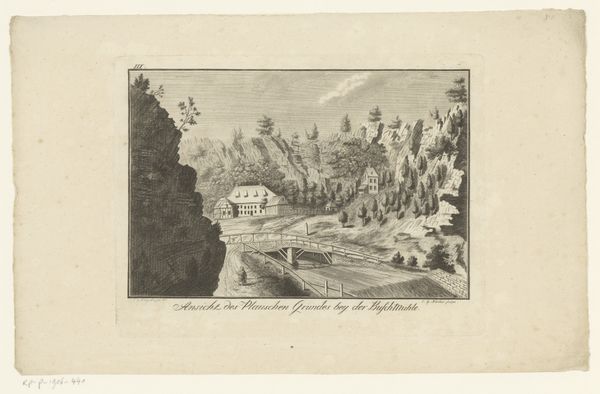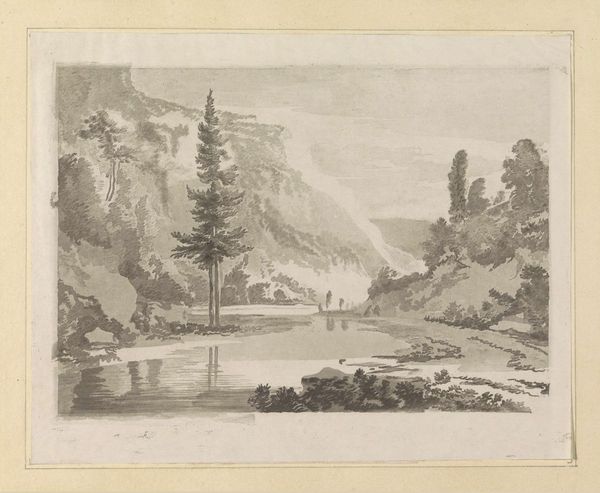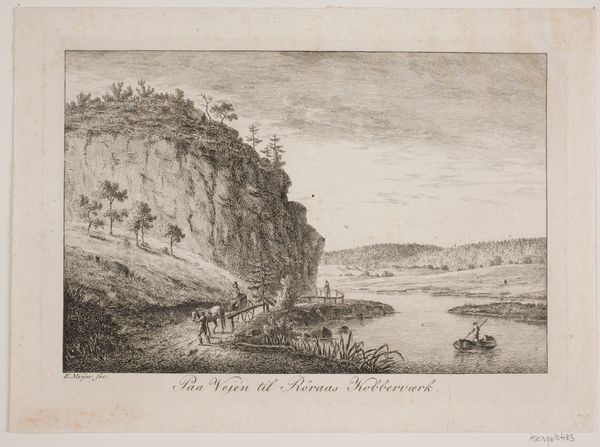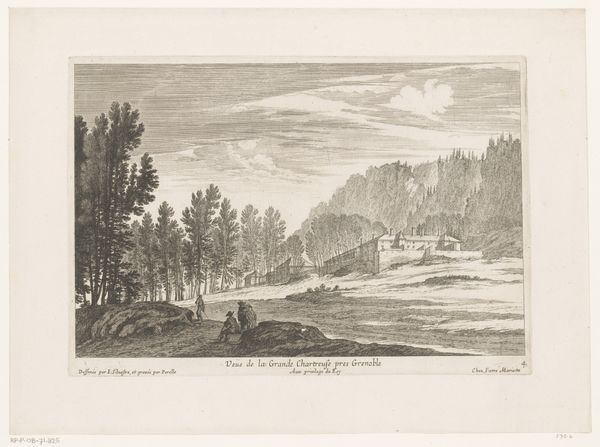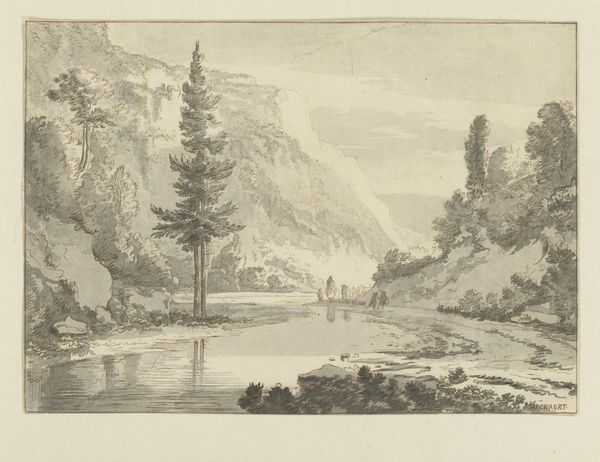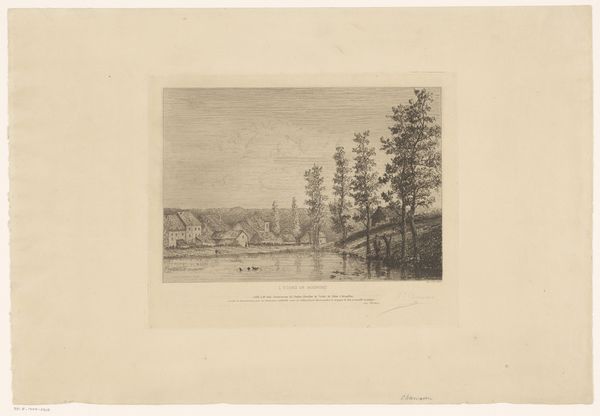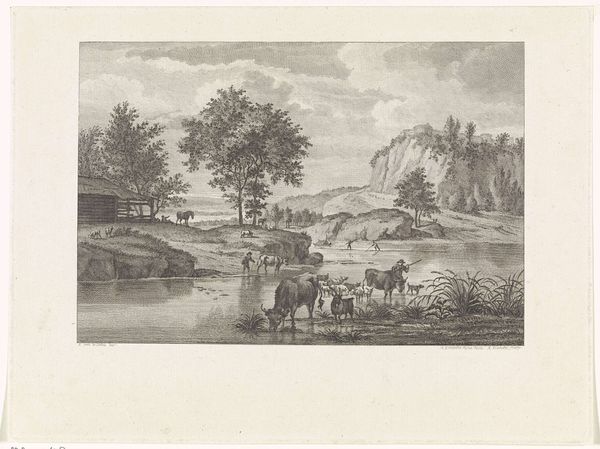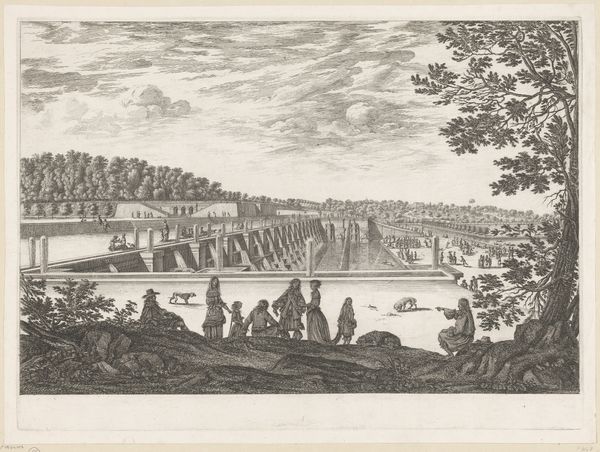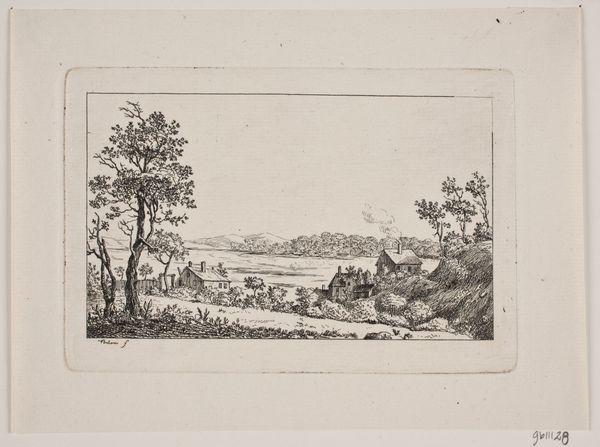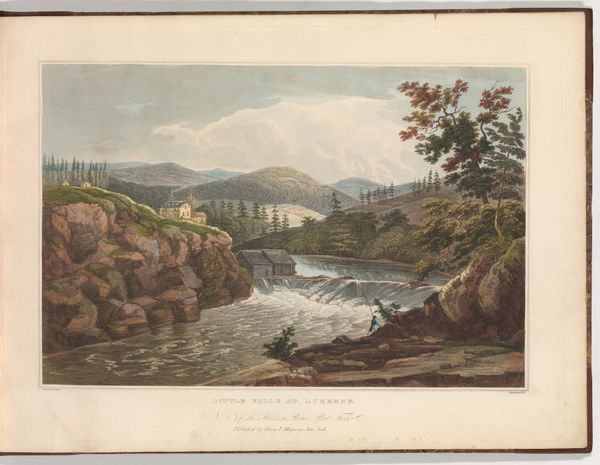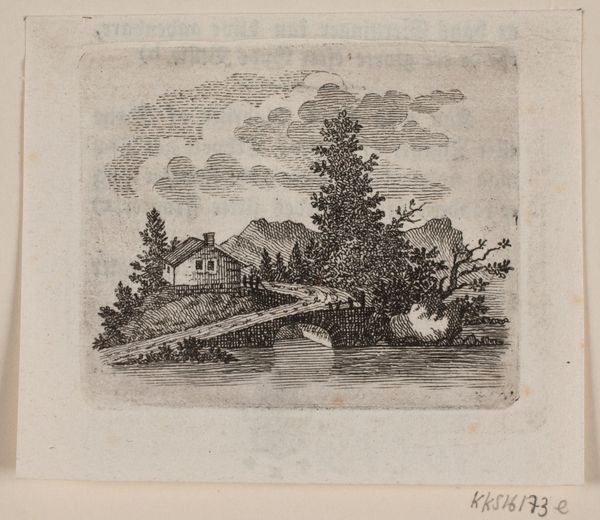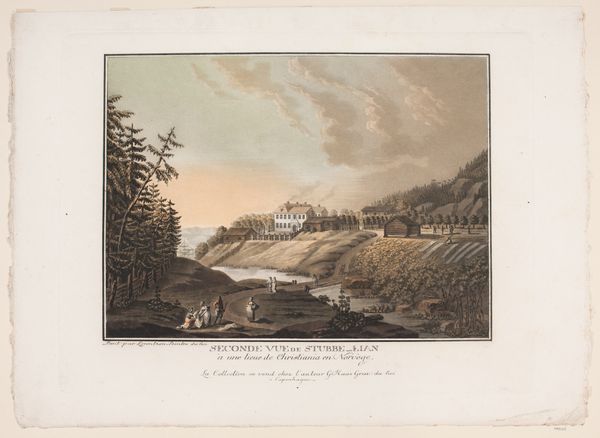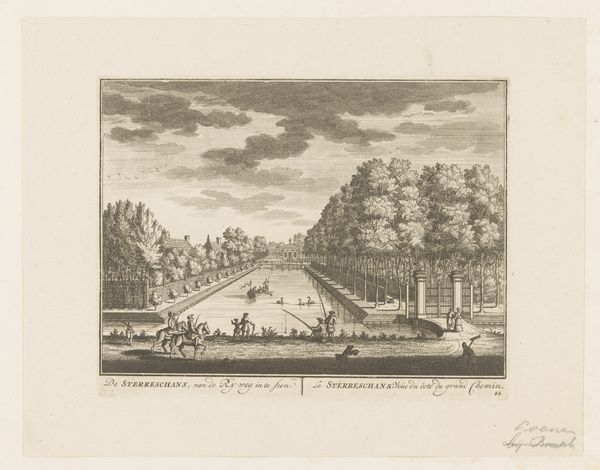
drawing, print, engraving
#
drawing
#
neoclacissism
# print
#
landscape
#
etching
#
engraving
Dimensions: 145 mm (height) x 209 mm (width) (plademaal)
Curator: We’re looking at “Næss i Aasen Nord for Trondheim,” an etching and engraving by Elias Meyer, created sometime between 1763 and 1809. Editor: It's so still and contained; a moment captured as though from a dream. The shades of gray are calming. What story is unfolding in this serene place? Curator: Meyer depicts an agrarian settlement in Norway. We can see modest timber buildings nestled near the riverbanks and a small boat crossing. Consider the socio-political landscape. Enlightenment ideals were circulating, impacting ideas of nationhood and the common person. How did such forces interact with images of Norwegian rurality? Editor: The boat itself—such a classic vessel populated with figures; it has connotations of journey, perhaps even pilgrimage, a link to narratives as ancient as the waterways themselves. Does the settlement represent more than just simple living; is it perhaps, a kind of Arcadia? What can be read in the scale of nature and humanity here? Curator: Well, the boat’s scale reminds us that humans are but a small component of the broader landscape; an important Romantic sensibility to recall as the engraving hints at an idyllic life but without glorifying excessive leisure or aristocratic dominance. Think of land ownership, the impact of resource distribution—Meyer's Norway can be analyzed from many angles. Editor: Agreed. There's a stillness, as I said, and that grayscale contributes; but, despite all that, there are many elements in motion, literally, in the center: boaters, currents, implied narratives. Consider the arrangement of dark and light as a microcosm for human experiences. Meyer really captures a cultural symbology. Curator: Yes! Looking at "Næss i Aasen Nord for Trondheim" allows us to reflect on how seemingly simple landscapes can reveal critical perspectives related to environment, culture, and class dynamics during this transformative period in European history. Editor: I concur completely. This quiet vista speaks volumes about what we can gain from a shared symbolic and visual literacy. Thank you for unpacking all that meaning.
Comments
No comments
Be the first to comment and join the conversation on the ultimate creative platform.
